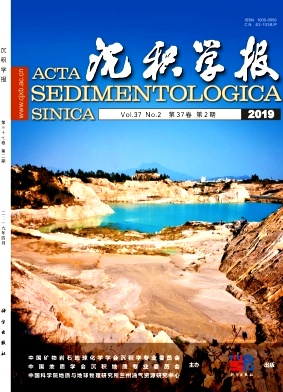Characteristics of the Reservoirs in Carbonate Ramp Facies from the Upper Cretaceous, HF Oilfield, Iraq
doi: 10.14027/j.issn.1000-0550.2018.191
- Received Date: 2019-10-09
- Rev Recd Date: 2018-12-17
- Publish Date: 2019-04-10
-
Key words:
- HF oilfield /
- Upper Cretaceous /
- gentle ramp facies /
- sedimentary facies /
- diagenesis
Abstract: The limestone deposits of the Upper Cretaceous Hartha Formation in the Iraqi HF oilfield are found in a carbonate ramp environment. The reservoir characteristics and main controlling factors are still unclear. Through drilling, logging, core, and seismic data, combined with thin section observations and analysis, the petrological characteristics, reservoir space types, and physical properties of the Hartha Formation in this oilfield are studied, and the controlling factors for the sedimentary facies and diagenesis are analyzed. The results show that the reservoir rocks of the Hartha Formation, with a thickness of about 50 m, are mainly wackstone, packstone and grainstone, with a porosity range of 10%-22% and permeability of (0.1-0.5)×10-3 μm2 and (1-5)×10-3 μm2, and the physical properties of the matrix are good. The upper part of the Hartha Formation has relatively good reservoir performance, while the lower part of the Hartha Formation develops external gentle slope mortar with poor reservoir performance. Sedimentation plays a major role in controlling the physical properties of reservoirs, the physical properties of reservoir rocks in shoal facies are better than that in non-shoal facies. The limestone reservoir develops inter-granular pores, biological mould pores, intra fossil pores, dissolved pores and micro fractures. During the exposure period of the Late Cretaceous, the dissolved pores were partially filled by cements under the epi-diagenesis, and there were strong cementation zones locally.
| Citation: | HUANG Qian, FU MeiYan, ZHAO LiMin, ZHOU Wen, WANG YuXiang. Characteristics of the Reservoirs in Carbonate Ramp Facies from the Upper Cretaceous, HF Oilfield, Iraq[J]. Acta Sedimentologica Sinica, 2019, 37(2): 371-378. doi: 10.14027/j.issn.1000-0550.2018.191 |






 DownLoad:
DownLoad: